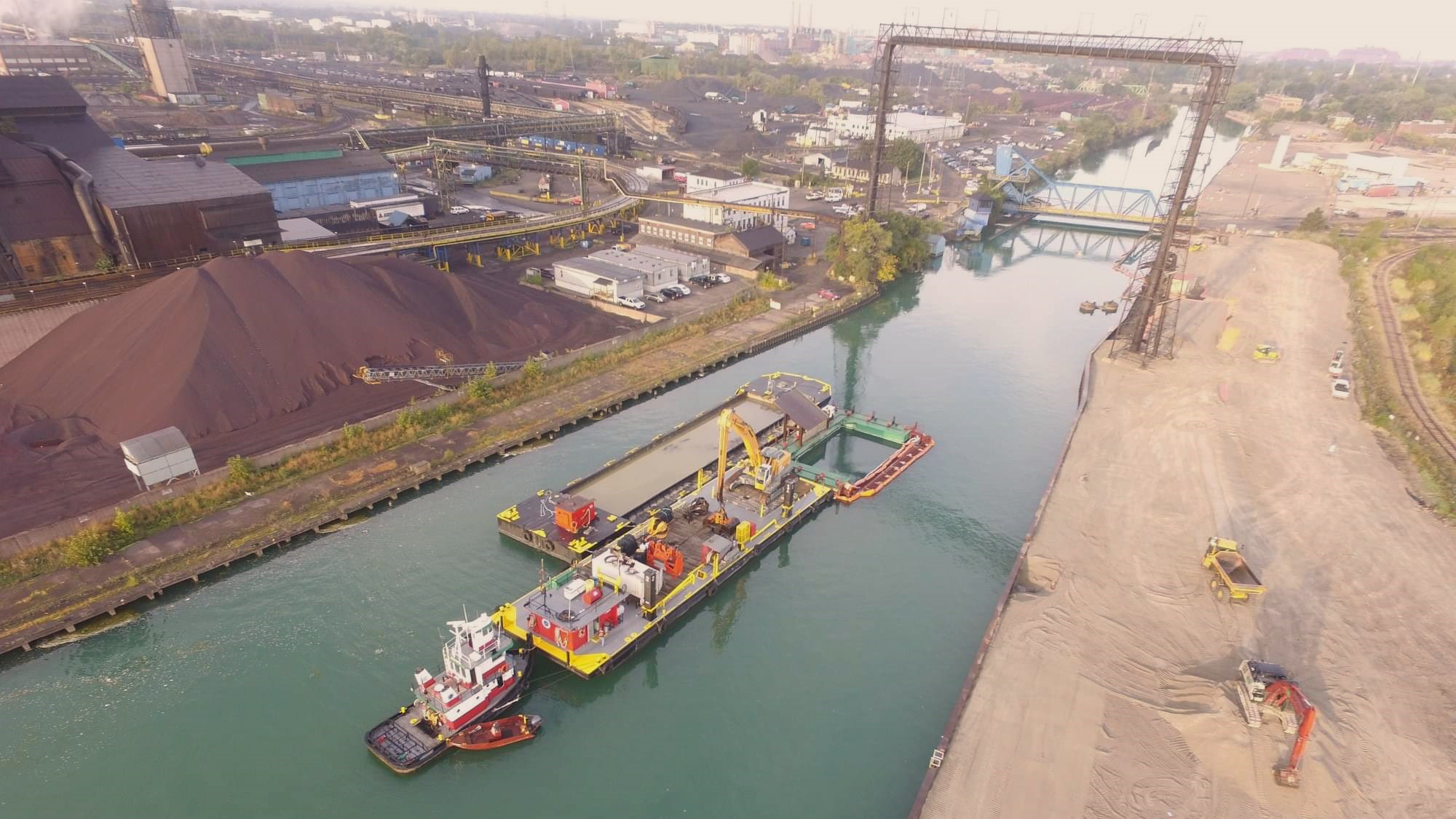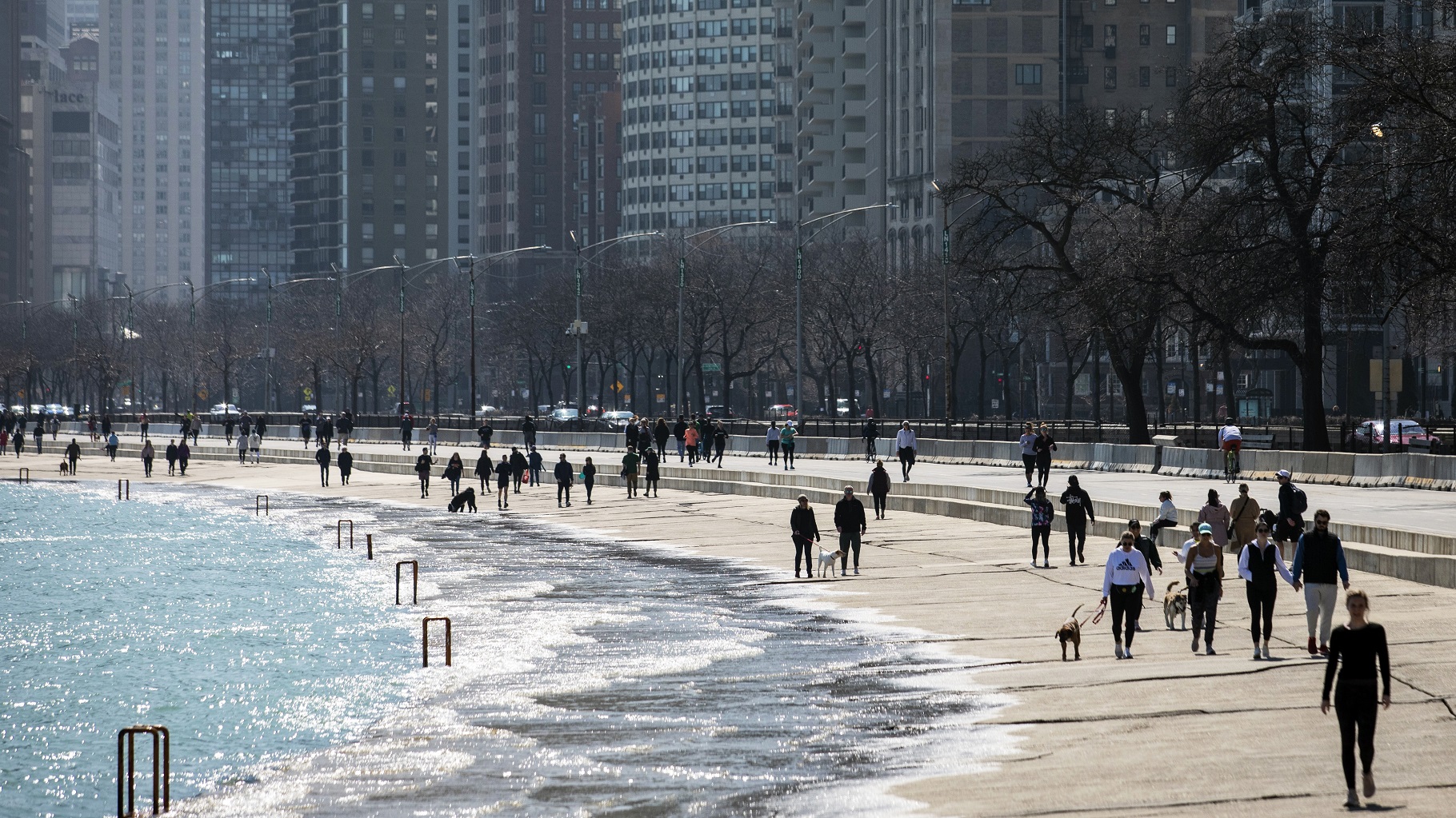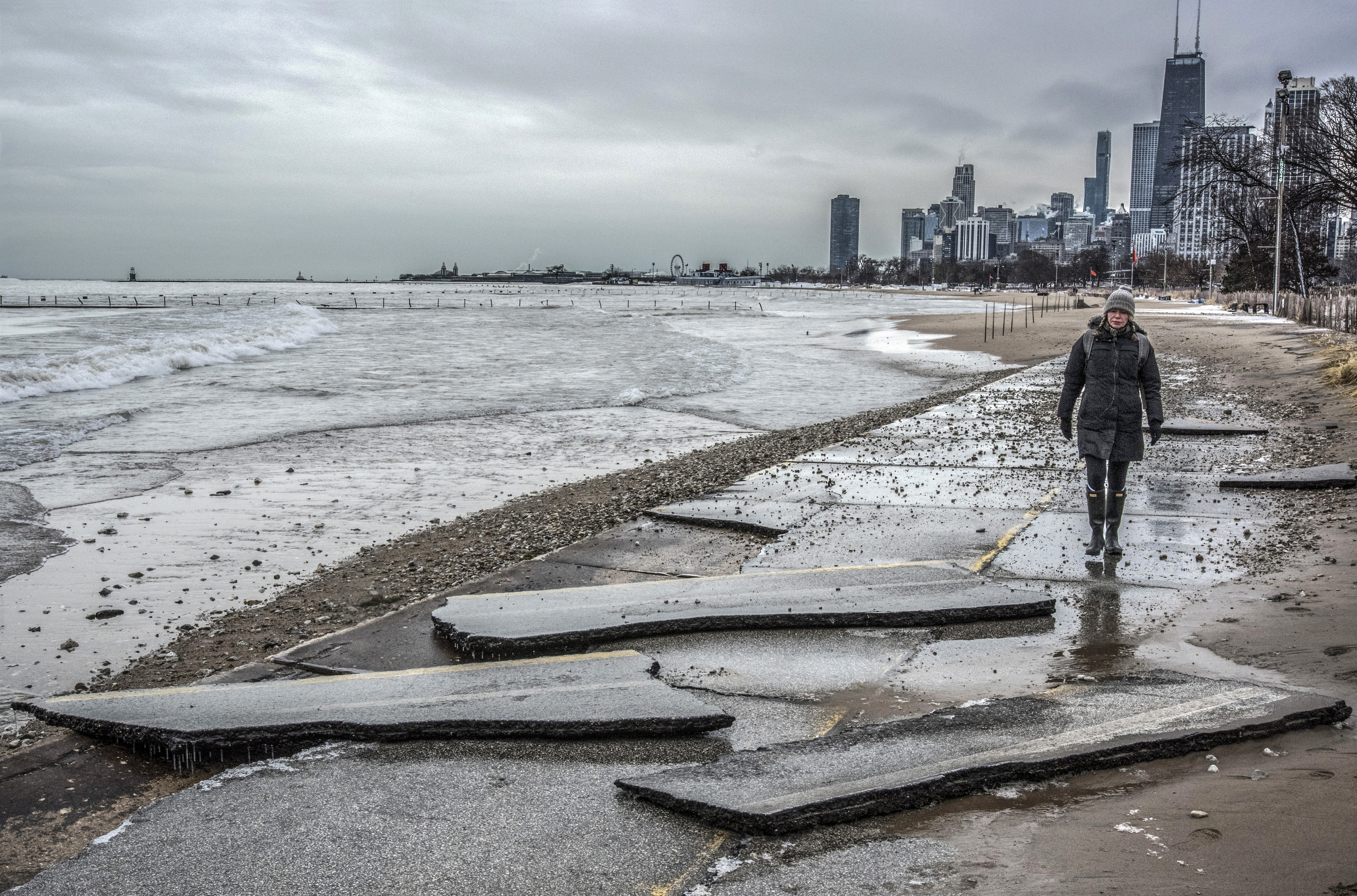
By Katie Pyzyk, Belt Magazine
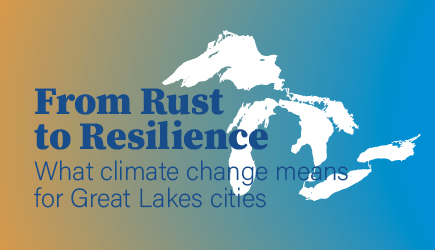
This article is part of the Pulitzer Center’s nationwide Connected Coastlines reporting initiative. For more information, go to pulitzercenter.org/connected-coastlines-initiative.
For all stories in the “From Rust to Resilience” project, including the Great Lakes Now monthly show, click HERE.
A scene from earlier this year in Chicago: Cyclists, runners, and pedestrians dodge chunks of uprooted asphalt scattered across the Lakefront Trail, some pieces as large as dinner plates. Feet away, swollen Lake Michigan laps at, and partially submerges, the public walkway that typically rests well above the water line. Farther north, the sand at two public beaches is gone, washed away in one January weekend. And residents who live near Lake Michigan are regrouping following winter flooding that inundated portions of their high-rise buildings.
Chicago is encountering firsthand the effects of climate change on the Great Lakes, the result of record-high lake levels, warmer temperatures, and more frequent major storms. This winter, Lake Michigan reclaimed large stretches of lakefront in the city, especially following a particularly damaging storm in January. Chicago is known for its harsh winters, and that January storm was strong, but it was not out of the ordinary. Yet it contained a perfect mixture of extremes that spawned widespread waterfront destruction. “It’s just the preexisting condition of that elevated lake level, combined with the storm, that really made for that even larger wave height – even more wave power – that created all that damage,” said Trent Ford, Illinois State Climatologist.
The Lake Michigan-Huron Basin has experienced near record-high lake levels since last year and tipped into the “record” category in January. “We are forecasting levels to remain above record highs” until July, at least, said Deanna Apps, a physical scientist with the U.S. Army Corps of Engineers. Lake Michigan reached its all-time highest level in October 1986, and it now sits just inches below that mark. “If we do experience the continued water conditions which we’ve seen over the last year, there is the potential for us to surpass that record,” Apps said.
Watch Great Lakes Now‘s segment “Chicago’s Battered Beaches”:
API key not valid. Please pass a valid API key.Like most Great Lakes coastal areas, Chicago is encountering an extended wet period that is expected to last at least through the spring. It’s not just that 2019 was a wet year—2018 and 2017 were as well, reflecting a much longer trend of increasing annual precipitation throughout Illinois. “We’ve had the wettest eighteen-month, twenty-four-month, thirty-six-month, and sixty-month periods on record in the city of Chicago,” Ford said. “In the last hundred years, we’ve seen [statewide] precipitation increase by about five inches.”
Warmer temperatures also are contributing to the record high lake levels. Cooler air in the fall and winter typically fuels evaporation as it passes over the Great Lakes. But the evaporation rate is lower this season due to a warmer winter. That’s preventing the usual seasonal lake level drop. “This should be the lowest time of the year, and if we’re only a few inches off of the long-term maximum… that doesn’t bode well for the spring and summertime,” Ford said.
Lake Michigan’s water level fluctuates naturally. What is unusual is the increased volatility in the rainfall and lake level changes, said Joel Brammeier, CEO of the Great Lakes Alliance. Specifically, the swings between low- and high-water levels are occurring more rapidly and reaching new limits. Lake Michigan was at a record low in 2013, and just seven years later it achieved a record high. “When you get two hundred-year storms happening in two years, you start to see the potential indicators that this is one of the effects that global climate change is having on the Great Lakes,” Brammeier said.
A growing volume of research supports theories that climate change plays a role and will continue to intensify the fluctuations in the lakes. “Where we’ve got to dig in and do something is when we see the extremes changing. That’s where we’ve seen the lakes as a barometer of climate change,” Brammeier said.
#
Government leaders are paying attention. At a February public event highlighting the damage, Democratic Senator Dick Durbin said, “If you don’t believe in climate change, Lake Michigan has a message for you: Wake up!” Durbin spoke following emergency declarations by Illinois Governor J.B. Pritzker and Chicago Mayor Lori Lightfoot. “This is climate change in action, right here in our city,” Lightfoot said at the event.
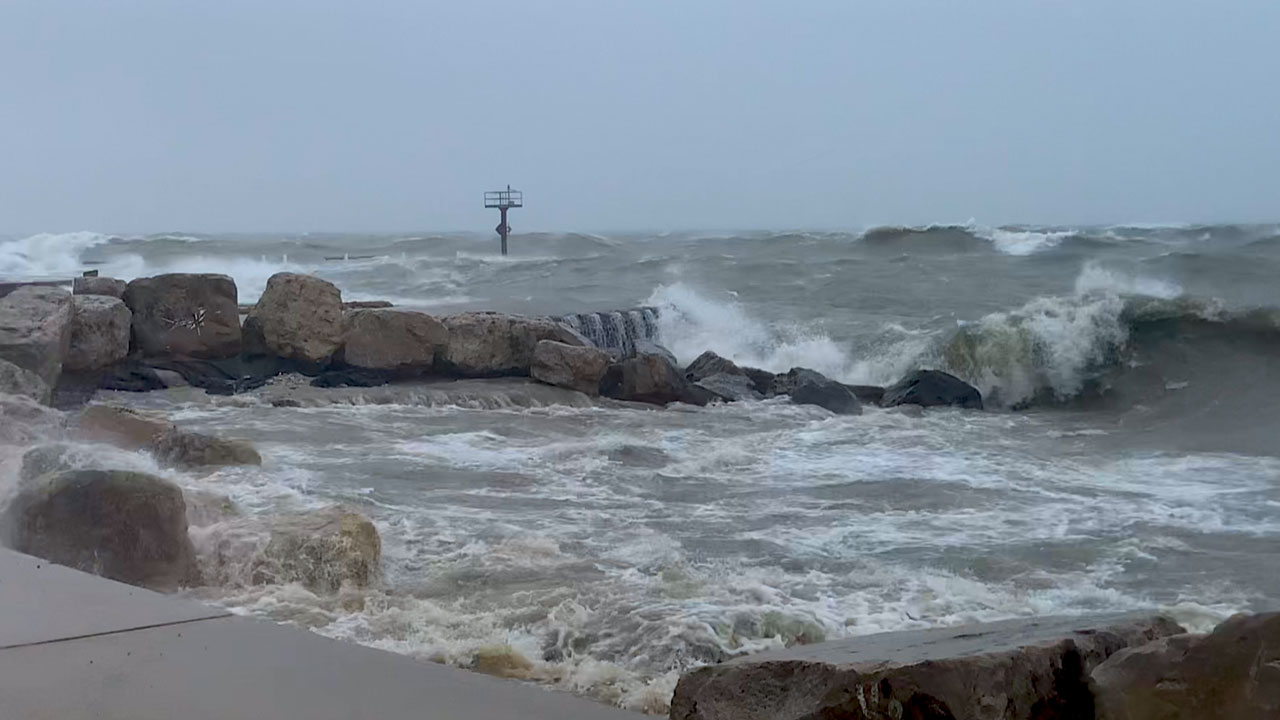
Last year, Chicago’s elected officials sounded the alarm about the potential for increased erosion and other damage from rising lake water levels; the very beaches that washed away in January had been flagged as high-risk areas just months earlier. And for years, the U.S. Army Corps of Engineers had been helping the city install riprap and retaining walls at erosion-prone areas of the shore. But they hadn’t yet reached the portions that were heavily damaged in January.
Most of Chicago’s lakefront property is public land, not private. The January storm’s damage to private properties largely occurred when waves overcame the shoreline and barriers, flowing into city streets. That was the scenario for residents in downtown Chicago. “Oak Street, where the lake is very close to Lake Shore Drive—that has been closed on several occasions,” said Mike Claffey, spokesperson for the Chicago Department of Transportation.
The Oak Street example is relatable to many Chicagoans because it is in a high-profile part of the city, but issues have cropped up all along the twenty-eight-mile shoreline. On the North Side, the city attempted to preserve some sandy areas at Howard, Juneway and Rogers beaches. However, the January storm wreaked such havoc that “there is no beach remaining at those locations,” Claffey said. The sand will not be replaced, and ten thousand cubic yards of rocky rip rap now takes its place.
Erosion is also a problem on the city’s South Side. Damage to public land is evident, but people are even more concerned with flooding in their homes. “It’s sad to lose the beach. … We love the beach, but people have high-rise buildings at the end of South Shore Drive over here!” said Marie Collins-Wright, Chicago resident and vice president of the Jeffery Manor Community Revitalization Council. Mayor Lightfoot cited residences near the shore as a top priority. “What I’m mostly concerned about is properties that are right on the edge of the lake that are literally teetering on the edge of destruction because their foundations are being eroded by the waters that are battering them on a regular basis,” she said.
The flooding illustrates the disproportionate environmental burden born by South Siders in predominantly working-class Black and Latinx communities. Collins-Wright lived on the North Side in her youth and has since lived on the Southeast Side for fifty years. She recounts a decades-long battle with lake and sewage water flooding into the ranch house her family bought there in the 1980s, and a lackluster response from the city. Effects from climate change joins the lingering environmental impacts of the Southeast Side’s industrial past – including numerous steel mills and a coke plant.
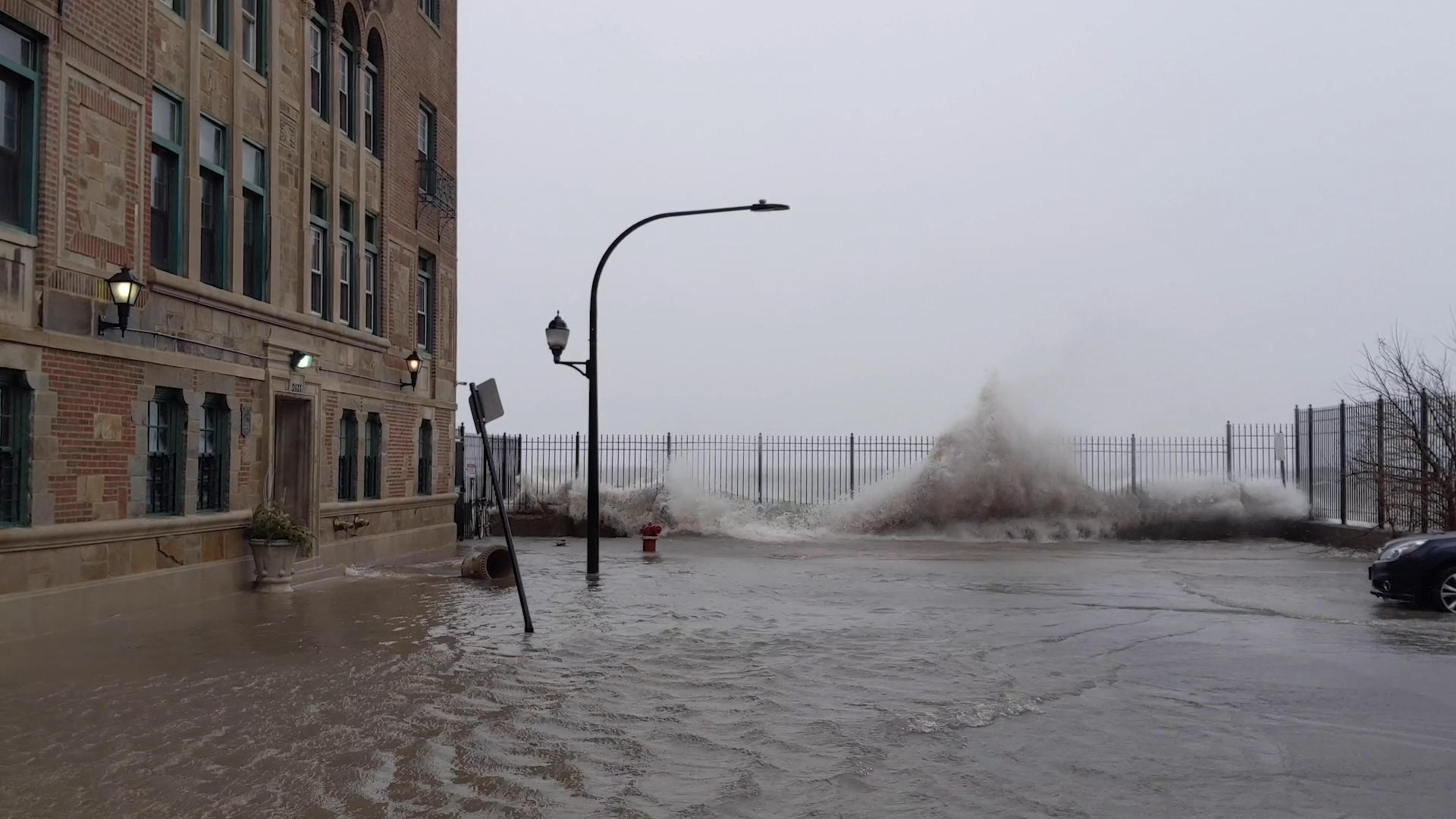
Southeast Side residents are particularly concerned about the confined disposal facility, which has been on the lakefront since 1984 when it became a holding facility for material dredged from the lake. For years, Alliance of the Southeast (ASE) and other citizen groups have petitioned for the CDF to be closed and the site cleaned up. Lake Michigan supplies water to Chicago and hundreds of neighboring municipalities – more than six million people in the region – as well as to people in other states. Community members fear that erosion at the CDF could eventually compromise the facility’s integrity and cause toxic waste to leach into the lake. “Chicago’s Southeast Side is environmentally overburdened already, so we don’t want this toxic landfill in our community,” said Amalia NietoGomez, executive director of the Alliance of the Southeast.
Apps, from the Army Corps of Engineers, explains that a raised lake level extends the waves’ usual reach. “That’s one of the main things with higher water levels, you see that the waves are now impacting higher on the shoreline and it’s causing a significant impact for flooding and erosion,” she said. The USACE has suggested expanding an earthen bulwark near the CDF to mitigate flooding, but residents want more. “If they lived out here, I bet they would have a whole different plan for fixing this,” Collins-Wright said.
Collins-Wright finds it hard to understand why leaders would neglect a valuable natural resource and allow it to negatively affect surrounding citizens with pollution and flooding. She grows passionate when speaking about Lake Michigan’s presence and importance in her life: a peaceful refuge as a child and a place to share time with her family as an adult. “I could never live any place that was not close to the lakefront,” she said. Upon moving to the Southeast Side, “I still wanted to be close to the lakefront, but I didn’t want the lake to be in my house.”
Currently, the USACE is conducting a study to examine whether to keep the facility at its existing site and expand it, or move it elsewhere. Several suggested locations are on the South Side. The results have been delayed from their anticipated release earlier this year. “Community members fought back and delivered eighty-five hundred petitions against any of the locations on the Southeast Side,” NietoGomez said. “The best solution would be to clean it – but we don’t know how much that would cost. … On the lakefront is not an option.”
Citizens acknowledge that this is a long-standing issue, and they’re hopeful that a new mayor taking office last year holds promise for a change of tack with the CDF, especially to prevent material leakage. “I know the problem was here before these politicians came in, but I think it should be a top priority. Don’t you have to prepare for a tornado before the wind blows? They’re not prepared,” Collins-Wright said.
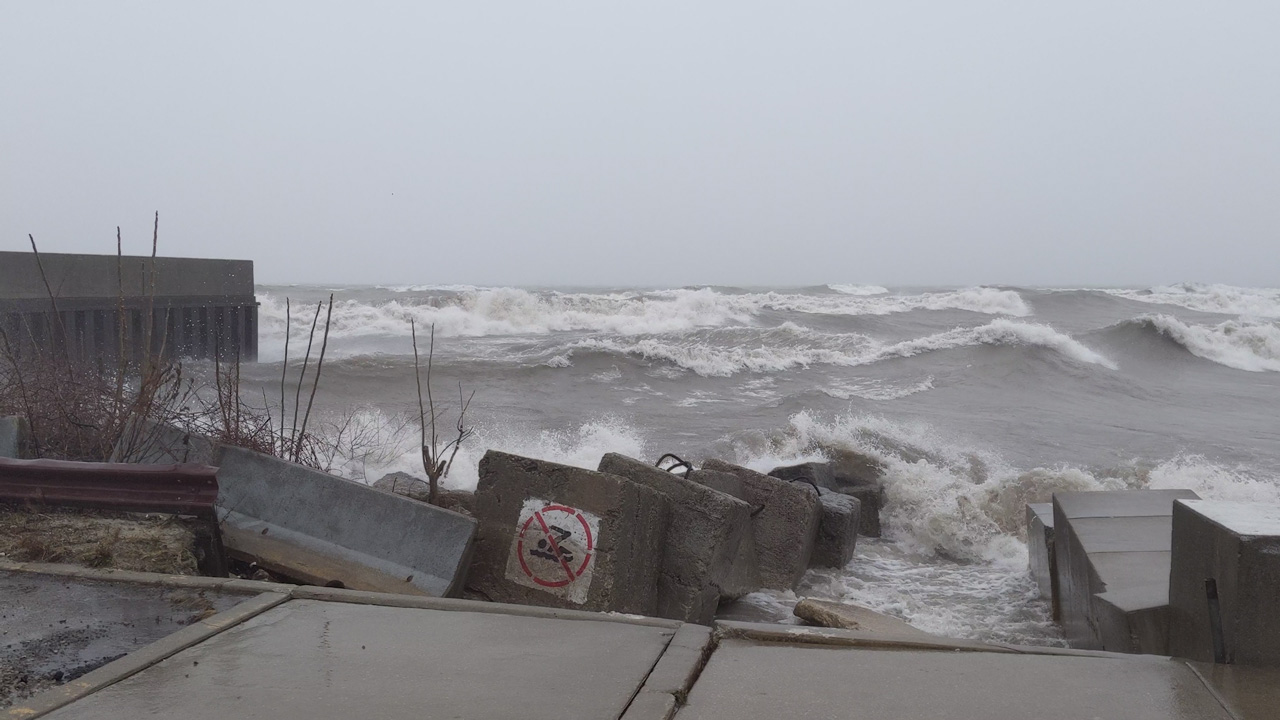
#
Meanwhile, the city has begun short-term erosion mitigation measures along Chicago’s shoreline. The city’s Department of Transportation and Park District are leading the response, in cooperation with USACE. The city and USACE installed five thousand feet of Jersey barriers and one thousand feet of sandbags to prevent roadway flooding during storms. USACE will install additional revetments, starting with 48th to 50th Streets on the South Side.
The city has also requested federal funding for the Great Lakes Coastal Resiliency Study, which would assess which areas are most vulnerable and guide the response to long-term resiliency. About eight miles of Chicago’s shoreline has been reconstructed through the Shoreline Protection Project over the last two decades. “The areas where we have installed revetments, those have withstood the lake levels and the storms well. It’s the areas that we haven’t gotten to that have suffered from serious erosion,” CDOT’s Claffey said. City and state leaders say the federal funding is necessary to proceed with the assessment and mitigation measures, such as more revetments. “We need to recognize the challenge of climate change is going to continue to threaten Lake Michigan and all the Great Lakes,” Durbin said. “Coordination between the federal government and the state and the city will be key in this process.”
“Right now, we’re in a crisis response mode,” Great Lakes Alliance’s Brammeier said. “In the long run, what we really need to do is take the time when lake levels do go down again – which they will – to use that time to make the shoreline more resilient and restore it for the future.” The resilient shoreline concept varies by location. In urban areas, it is “probably going to look a lot like Chicago’s, where you have hard structures – concrete and rock – that hold the shoreline in place,” he said. But on other portions of the Great Lakes’ shores it could mean recreating natural environments such as wetlands and dunes.
Regardless of the form each area’s response takes, communities need to build for the “new normal,” which is more volatile rainfall and lake levels due to climate change. The impacts of climate change are not far afield global mysteries,” Brammeier said. “They’re things we feel and see right here at home.”
####
Katie Pyzyk is an independent reporter, writer, and editor living in Chicago.
“From Rust to Resilience: What climate change means for Great Lakes cities” is a collaborative reporting project that includes six members of the Institute for Nonprofit News (Belt Magazine, The Conversation, Ensia, Great Lakes Now at Detroit Public Television, MinnPost and Side Effects Public Media) as well as WUWM-FM Milwaukee, Indiana Public Broadcasting and The Water Main from American Public Media.
This project is part of the Pulitzer Center’s nationwide Connected Coastlines reporting initiative. For more information, go to pulitzercenter.org/connected-coastlines-initiative.

Featured image: The Lakefront Trail near North Avenue in Chicago, January 2020. Photo by Lloyd DeGrane via Belt Magazine.


